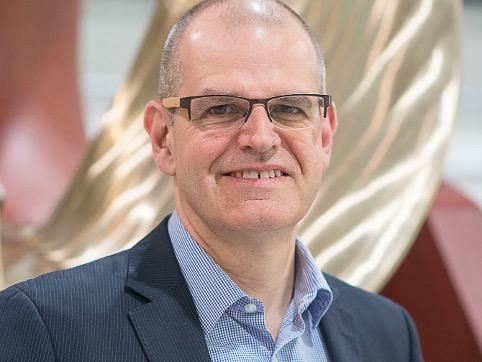Safety in the world of new shipping fuels
The importance of safety practices in ship electrification and protocols when handling new fuels are to be discussed in an IMarEST webinar.
New fuels and technological innovations are part and parcel of marine operations, and a priority is to ensure safe and secure handling of alternative energy sources, and training in the digitalisation of shipping.
Kevin Daffey, Chairman of the Board of Trustees at IMarEST, explains that thorough risk assessments are crucial when adopting, for example, ship electrification or alternative fuels: "This means identifying potential hazards related to battery systems, electrical components, and fuel handling (for example, hydrogen, ammonia, or methanol) are the first steps in creating a set of mitigations that can be applied and recorded in an effective safety management plan."
Electrified ships often rely on large battery arrays, which can pose risks like thermal runaway or fire. Daffey says that implementing battery management systems (BMS), regular inspections, thermal monitoring, and clear protocols for handling damaged batteries are essential.
"For new fuels such as hydrogen or ammonia, having proper ventilation and gas detection systems is critical to prevent accumulation of dangerous gases," Daffey continues. "Automatic shutdown systems have to be put in place to minimise the risk of gas leaks and prevent explosions."
Another issue is that new fuel types can be highly reactive with specific materials. Therefore, it's vital to guarantee that pipelines, storage tanks, and components are compatible with the fuel type as a vital safety measure to prevent leaks or equipment failures.
"Crew members must receive specialised training in handling new fuel types and understanding the safety features of electric or hybrid propulsion systems,” says Daffey. "This includes knowledge of emergency procedures and the correct use of safety equipment - in particular, means of isolation, lockout-tagout."
For alternative fuels like methanol, hydrogen, and ammonia, crew members will need specific training on handling, storage, and bunkering procedures. This includes understanding the properties of these fuels, associated risks, and emergency response protocols.

Technological evolution
With increased ship automation, crew members must also be proficient in using digital interfaces, automated navigation systems, and remote monitoring tools. "Training should also cover cybersecurity basics, such resisting phishing attacks, avoiding the use of unauthorised USB devices, maintaining password security, [and] never leaving unattended systems logged in, to protect the vessel's systems from cyber threats."
Additionally, ongoing education programs should be established to keep the crew updated on the latest technological advancements and safety regulations. "Simulators and e-learning platforms can be effective in providing hands-on training and scenario-based learning," Daffey explains. "This is an area where IMarEST can add huge value in supporting sea-going engineers and their employers."
Health and safety versus daily operations
The need to implement a comprehensive integrated safety management (ISM) systems that cover all aspects of vessel operations, including new technologies and fuels, is important says Daffey: "This system should integrate risk assessment, incident reporting, and safety protocols into daily operations to create a culture of safety.
"Utilising predictive maintenance technologies helps identify potential equipment failures before they occur. This not only ensures safety, but also minimises unplanned downtime, allowing ships to operate more efficiently."
Conducting frequent safety audits, emergency drills and developing clear communication lines help keep crew members alert and prepared, Daffey concludes: “These drills should include realistic scenarios involving equipment failures, fuel leaks, or automation breakdowns to test the crew's response time and effectiveness.
"It's also essential to keep humans in the loop for critical decision-making processes. A balanced approach that combines automated systems with human oversight helps mitigate the risks associated with over-reliance on technology.
"Establishing clear communication protocols between crew members, shore-based teams, and emergency responders ensures that everyone is on the same page during critical situations."
Sign up for IMarEST’s free ‘Health and safety considerations for operating with new technologies’ webinar on 12 December, featuring Daffey.
Newsletter Image: Hydra, the world's first hydrogen operated ferry, in Norway.
Inline image: Kevin Daffey, Chairman of the Board of Trustees at IMarEST; credit: Kevin Daffey.
Tell us what you think about this article by joining the discussion on IMarEST Connect.
